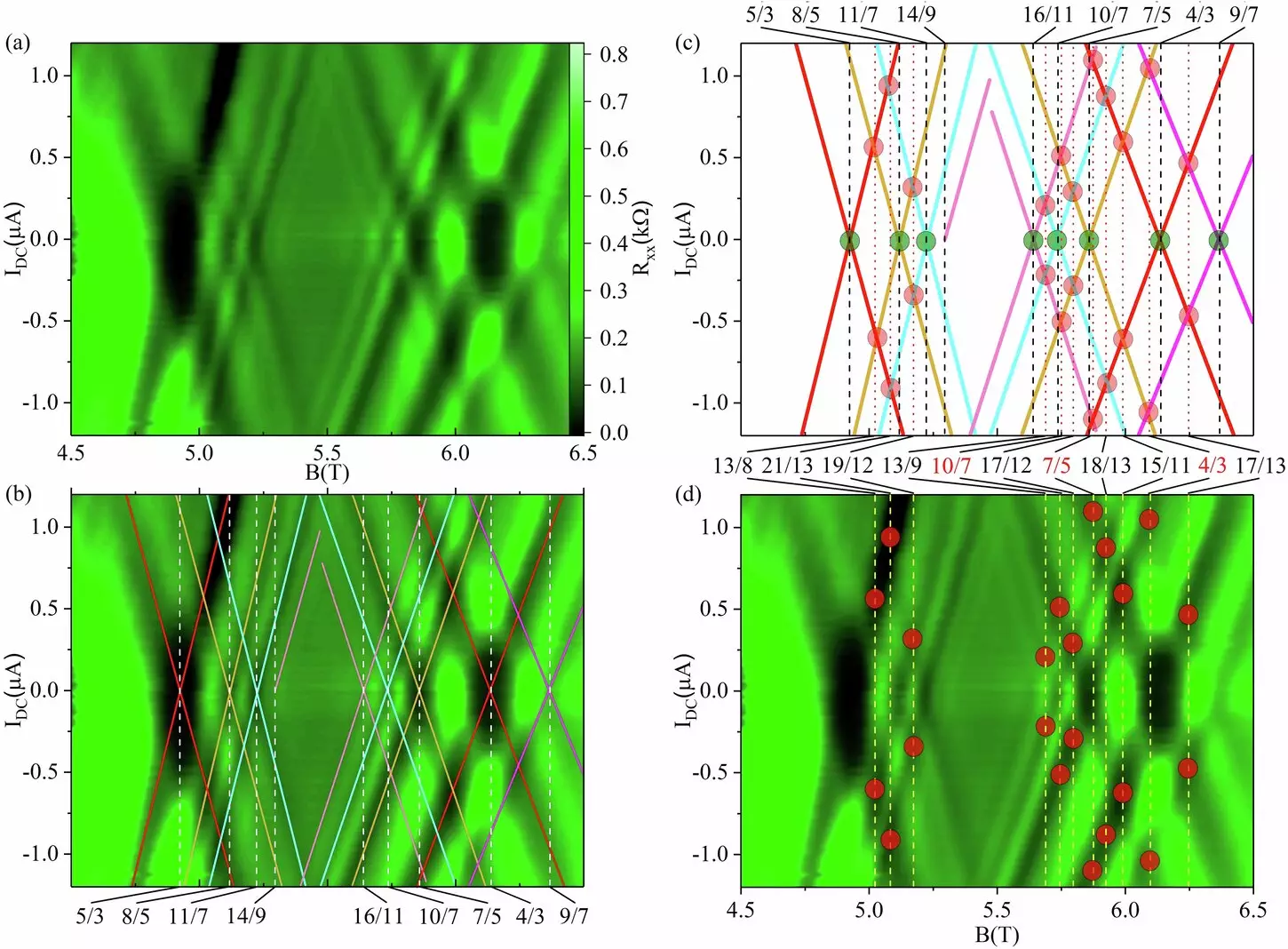The realm of condensed matter physics is a vibrant landscape that continuously unveils the astonishing intricacies of matter at the quantum level. At the heart of this exploration lies the concept of flatland, a two-dimensional space that revolutionizes our understanding of particles, particularly electrons. Distinguished physicists, including Ramesh G. Mani from Georgia State University and Ph.D. alumnus U. Kushan Wijewardena, are pioneering this frontier with their recent research published in *Communications Physics*. Their findings delve deeper into the complexities of fractional quantum Hall effects (FQHE), offering insights that challenge long-standing assumptions and beckon further inquiry into the unknown.
The fractional quantum Hall effect remains a seminal subject within modern condensed matter physics. It fundamentally alters how we perceive particle behavior within a confined two-dimensional space. Mani highlights the remarkable trait of particles in this flatland; they can embody different characteristics depending on contextual variables. The ongoing investigation into these phenomena is significant for its potential to fuse theoretical physics with practical advancements, further enriching the foundations of contemporary technology and materials science.
The origins of the quantum Hall effect trace back to Klaus von Klitzing’s groundbreaking work in 1980, which established the relationship between electrical measurements and fundamental physical constants. This discovery has since unlocked a cascade of innovations, including the identification of the fractional quantum Hall effect in 1998 and the subsequent revelations surrounding massless electrons in graphene—an advancement that contributed to the body of work celebrated with Nobel Prizes.
Setting the stage for their latest experiments required extraordinary conditions. The research team conducted their studies at near absolute zero temperatures, utilizing magnetic fields significantly stronger than Earth’s to create ideal scenarios for observing electron behaviors. By directing specialized currents through semiconductor devices crafted from gallium arsenide and aluminum gallium arsenide, they ventured into previously unexplored territories of the fractional quantum Hall regime.
Their findings were remarkable; the team noted unexpected splitting of FQHE states and the emergence of new non-equilibrium phenomena. The ability to coax these unusual behaviors from flatland particles challenges existing paradigms, suggesting a hybrid origin of the observed characteristics. This exploration serves as an analogy for expanding knowledge—if traditional FQHE studies represent the ground floor of a building, then this research reaches toward the unexplored upper levels, revealing the richness and complexity of excited states.
The Implications of Groundbreaking Discoveries
The implications of this research extend well beyond theoretical curiosity. In a fast-evolving technological landscape, the ability to manipulate materials at a quantum level holds promise for profound advancements, particularly in fields such as quantum computing, sensor technology, and energy efficiency. Each finding lays the groundwork for future innovations that may reshape our technological ecosystem, offering new solutions aimed at enhancing efficiency and driving sustainability.
As the research progresses, Mani and Wijewardena are intent on broadening their inquiries into even more extreme conditions. Their commitment to dissecting the nuances of flatland characteristics reflects a deep-seated desire not only to prevail in scientific discovery but also to illuminate pathways for future generations of physicists.
Training the Next Generation of Innovators
The academic journey undertaken by researchers like Wijewardena exemplifies the importance of mentorship and education in scientific inquiry. His transition from graduate studies to a faculty role signifies an essential bridge between discovery and pedagogy. The responsibility of shaping the next wave of scientists is one that influences not just the discipline of physics, but also the evolution of industries reliant on advanced technologies.
As they unravel the complexities of FQHE, Mani and his team are simultaneously fostering a community of learners, igniting passions for research, and cultivating skills that can lead to revolutionary breakthroughs. Their efforts illuminate the pathways toward innovation while nurturing talents ready to confront the challenges of digital and material science.
The journey into the realm of fractional quantum Hall effects penetrates the very fabric of our understanding at the quantum level. As the study of these uncharted phenomena matures, the potential for transformational advancements in technology and science continues to rise. The pioneering work by Ramesh G. Mani and U. Kushan Wijewardena exemplifies the interplay of curiosity, experimentation, and education that drives scientific progress. As they strive to uncover the hidden dimensions of quantum physics, the impacts of their discoveries are bound to resonate across various fields, from data processing to renewable energy solutions, ensuring that the legacy of flatland continues to inspire and innovate in the realms of tomorrow.


Leave a Reply